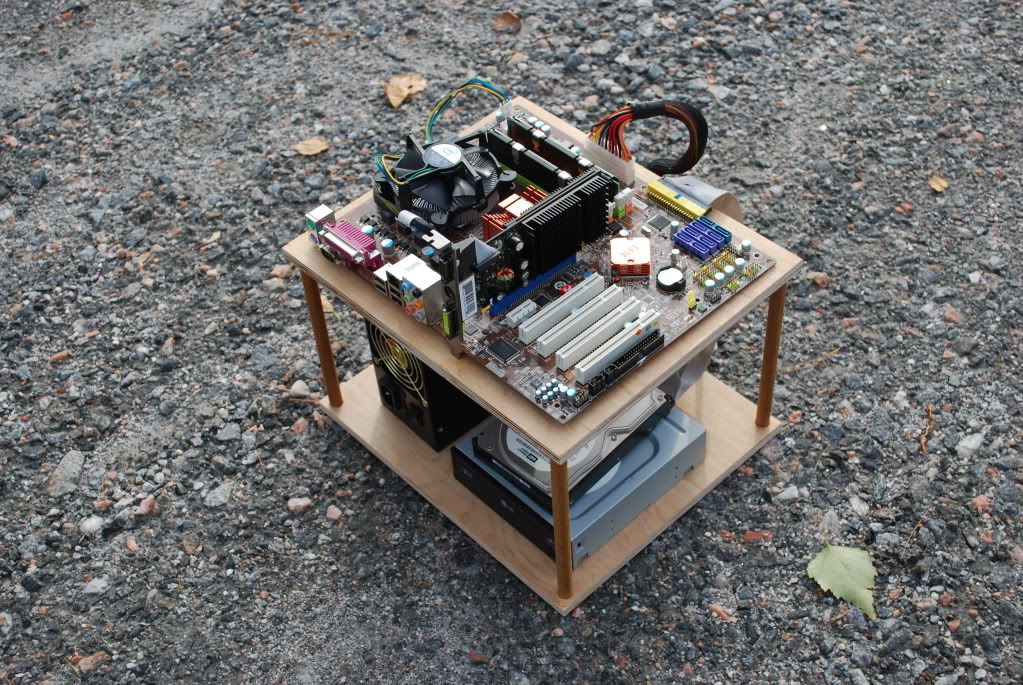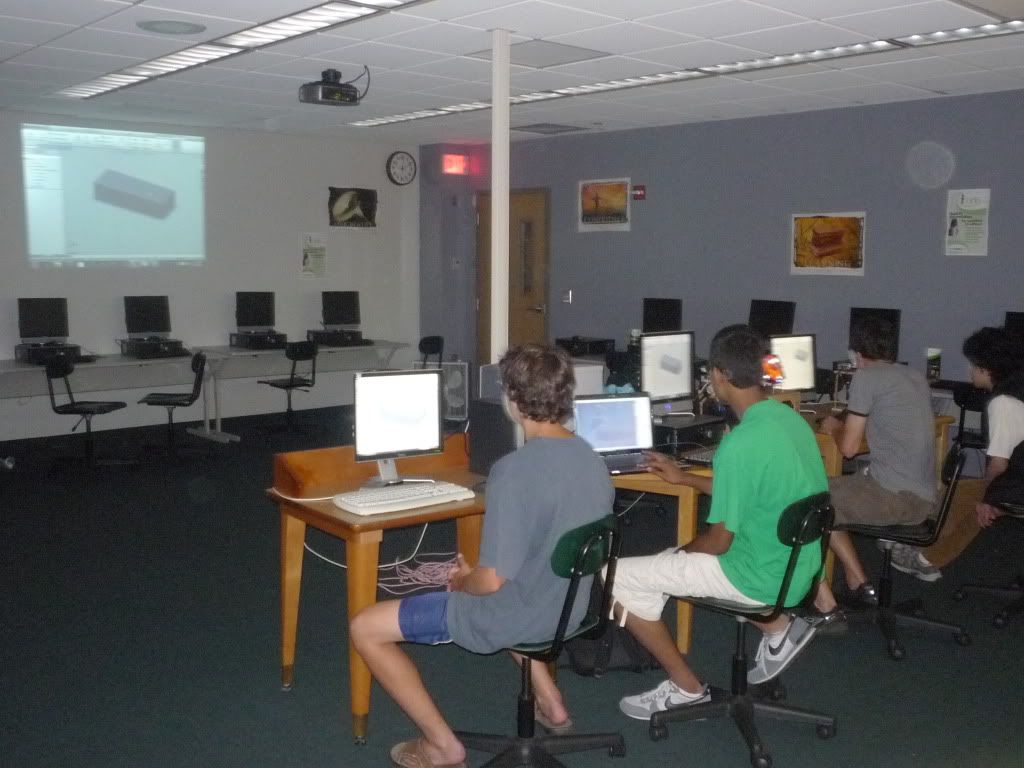As part of my intership with Robotics and Beyond Inc., I was tasked with the creation of a Computer Science curriculum to teach to interested students this past summer. The idea was to create a computer that would be easy enough to take apart and put back together that, after some quick instruction from me, the students could successfully assemble it by themselves. I knew from experience that a store-bought case wouldn't fit the bill, so I decided to build one myself. I decided on an open case design so the students could see how the individual components work while the computer is turned on (plus I just think it looks better).
I wanted the students to have something to relate the hardware to. They knew that 'this' was a graphics card and 'that' was a CPU, but they didn't know what each did. I wanted to show them what programs stressed each component individually, and that you have to keep the intended use of the computer in mind when selecting its components. I offered to teach the basics of Solidworks (a CAD program) to illustrate this point. My supervisors liked the idea and asked me to build another computer for a student to use Solidworks on. The catch: the total cost of the parts could not exceed $350. The cost would certainly limit things, but I still wanted to make a statement to the students. I wanted to show them that a small, cheap computer designed with efficiency in mind could be just as powerful as a desktop. I built the mini-ITX PC below for $312 and tweaked it until it was as fast as the open machine above.
In Solidworks, I showed the students how to build complex 3D arrangements by combining singular parts in an assembly file. I decided the iconic Lego brick was the perfect tool for this, so I walked each student through the making of an individual brick and showed them the mechanism by which Solidworks locks two 'part' files together. I then let the students experiment, encouraging them to create models of the robots they had made in the other projects.




No comments:
Post a Comment